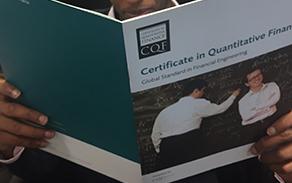The Asset Swap: What You Need to Know

What is an Asset Swap?
An asset swap is a derivative contract where two parties exchange fixed and floating assets. The contract is like an interest rate swap - there fixed and floating rates are exchanged, but here the instruments may involve cash flows based on a notional principal set into the contract and agreed to by both parties. Asset swaps are arranged between financial institutions and businesses and are traded in the over the counter (OTC) markets, but not on stock exchanges.
What is the Purpose of Asset Swaps?
Asset swaps are often used to hedge currency, credit, or interest rate risks. They can be set up to create a floating rate component to a bond with a fixed interest rate and are a common way for banks to meet their short-term liabilities by converting fixed rate assets held for the long term into a floating rate coupon-oriented product.
Within the swap structure, two transactions occur. In the first phase, as an example, a swap buyer (sometimes called a protection buyer) might purchase a bond from the swap (protection) seller, paying a price equal to the par value of the bond and the accrued interest on the bond. This is called the “dirty price.”
In the next phase, the buyer will enter a contract to pay the seller fixed coupon payments equal to those received from the bond. In exchange, the seller will give the buyer a floating rate payment based on a benchmark plus or minus a fixed spread. This benchmark was formerly reliant on LIBOR, but due to the retirement of LIBOR, a range of options including the popular Secured Overnight Financing Rate (SOFR) are available as a replacement now.
Once the contract is in place, if the issuer of the bond goes into default, the buyer will continue to receive the floating rate payment from the seller and has thereby successfully mitigated the credit risk exposure inherent in the original purchase of the bond.
However, while asset swaps can mitigate credit risk and interest rate risk, it's important to note that they can also introduce counterparty risk. This is the risk that the other party involved in the asset swap will default on their obligations. As a result, it's critical for both parties to carefully assess the creditworthiness of their counterparty before entering an asset swap.
Asset Swap Spread Calculation
An asset swap spread, also known as an asset swap margin, is essentially the difference between the bond's yield and the corresponding swap rate, which effectively measures the credit risk of the bond. To calculate it, you would usually follow these steps:
- Calculate the bond's yield, which involves finding the discount rate that makes the present value of the bond's cash flows equal to its market price.
- Find the corresponding swap rate, which is the fixed rate in the swap contract that would make the value of the fixed leg equal to the value of the floating leg.
- Subtract the swap rate from the bond's yield. This difference is the asset swap spread.
The asset swap spread is essentially the premium or discount the bondholder receives (or pays) relative to the risk-free rate (swap rate) to take on the credit risk of the bond. This spread is typically expressed in basis points.
If the asset swap spread is positive, it means the bondholder is receiving a premium for taking on the bond's credit risk. If it's negative, the bondholder is effectively paying a premium to eliminate the bond's credit risk. This can happen when the bond's yield is lower than the risk-free rate, which can occur in times of high demand for safe assets.
Please note that while this is a typical calculation, the exact formula can differ depending on the specifics of the bond and the swap contract.
Further Education on Asset Swaps
In an environment of rising interest rates, asset swaps are of great interest to banks, businesses, and institutional investors. Information about asset swaps and other financial instruments may be found in the syllabus of the Certificate in Quantitative Finance (CQF).
Delivered online, part-time, over six months by industry leaders, the CQF explores the real-world use cases and limitations of quantitative models and methods for each of the major asset classes, including equities, fixed income, structured products, and derivatives. The program also focuses on the use of machine learning in quantitative finance, with delegates learning to code and implement various models in Python throughout the program.
Upon completion of the program, CQF alumni have access to further educational offerings for the rest of their career through the Lifelong Learning library.
Find out more about the CQF
Ready to advance your career with the CQF? Download a brochure to discover how the CQF could help you gain the skills you need to succeed in today’s financial markets.




